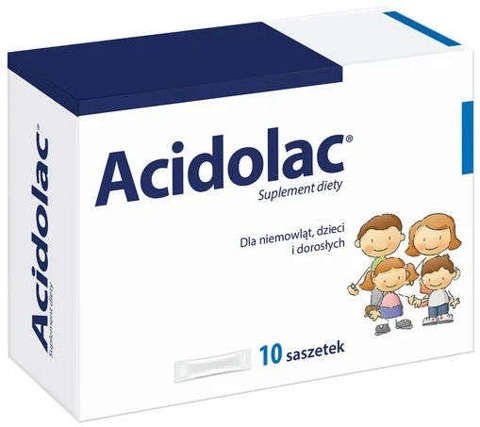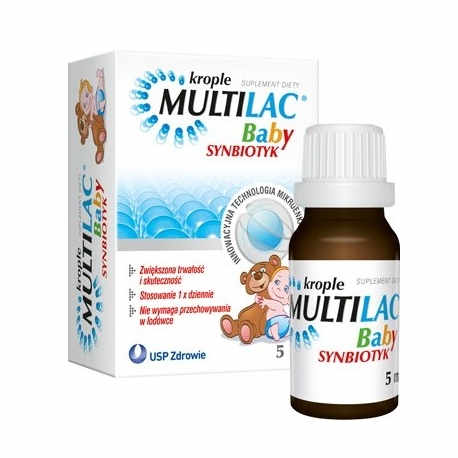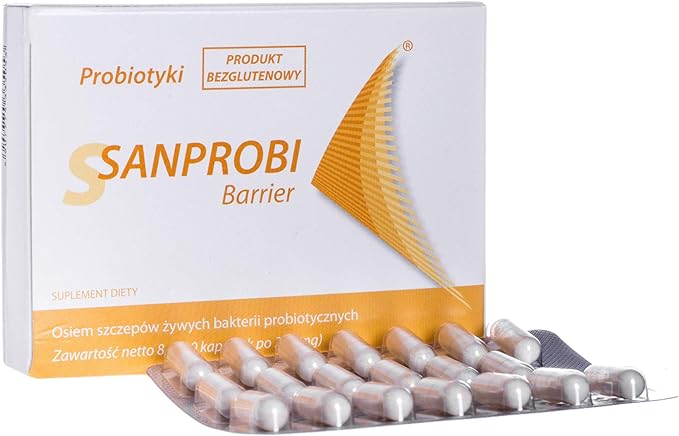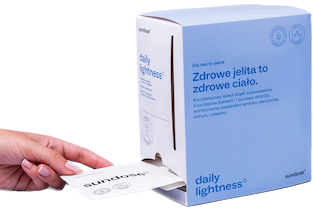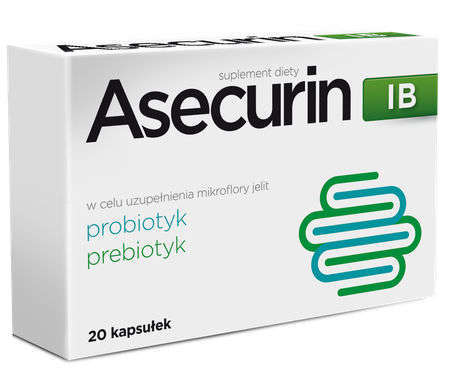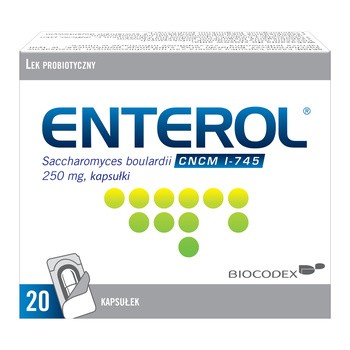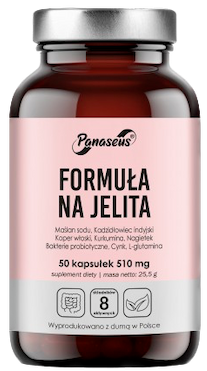Best probiotic for children, babies and adults [ranking].
Find the best probiotic for your ailments. Ranking of the best probiotics for children and adults.


Learn more about our editorial process
.

Learn more about our editorial process
.

Learn more about our editorial process
.

Learn more about our editorial process
.![Best probiotic for children, babies and adults [ranking].](https://cdn-resources.natu.care/uploads/1/woman_bottle_yogurt_2_2_d21b5ef262.jpg)
Why you can trust us
Articles on Natu.Care are written based on scientific research, data from government websites and other reliable sources. The texts are written in cooperation with doctors, nutritionists and other health and beauty experts. Articles are reviewed before publication and during significant updates.
.Learn more about our editorial process
.Information about advertisements
Content on Natu.Care may contain links to products from the sale of which we may receive a commission. When creating content, we adhere to high editorial standards and take care to be objective about the products discussed. The presence of affiliate links is not dictated by our partners, and we select the products we review ourselves completely independently.
.Learn more about our terms and Conditions
.When spending money on a probiotic, you want to buy the best possible one. We understand that. That's why we've put together 10 suggestions for probiotic preparations that won't let you down.
Probiotics differ in their composition, i.e. the types of bacterial strains. Which product will best meet your needs depends on the reason you want to use it. And these can be many: from a standard antibiotic shield to gynaecological problems or improving immunity in children.
From this article you will learn:
- Which probiotic is best for young children and which is best for adults. .
- Whether you can take the same product for different ailments .
- What to look for when buying a probiotic.
- What to look for when buying a probiotic.
- What probiotics do for your health. .
- Are there contraindications to probiotic therapy. .
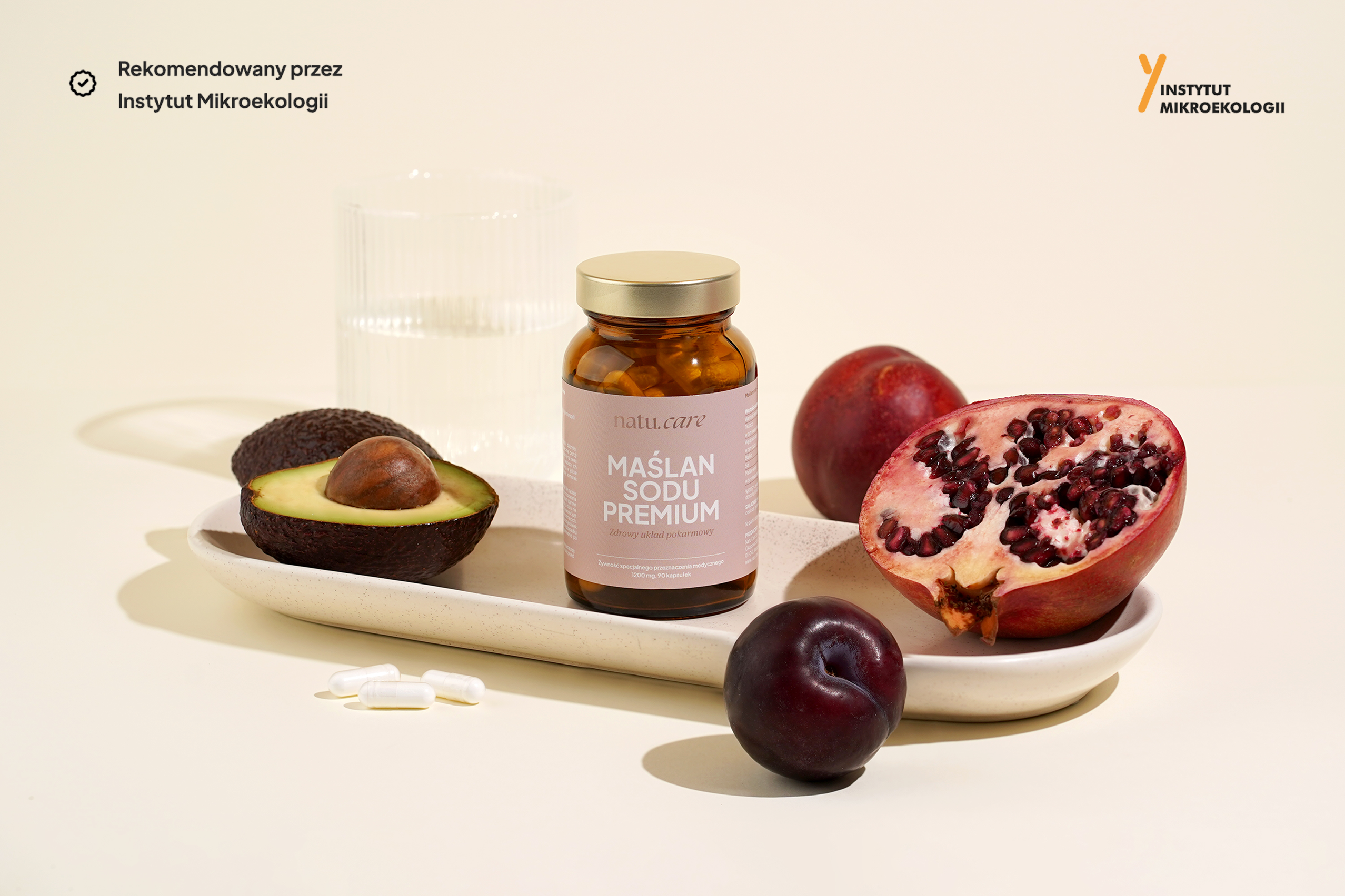
Odkryj korzyści, jakie niesie ze sobą Maślan Sodu Premium od Natu.Care! -15% z kodem BLOG15
Natu.Care Maślan Sodu Premium
Poznaj Maślan Sodu Premium – najwyższej jakości suplement wspierający zdrowie jelit. Maślan sodu pomaga w regeneracji nabłonka jelitowego, poprawia trawienie i wspiera naturalną równowagę mikroflory.
Sprawdź cenę
W końcu się lepiej czuję! Pożegnałam się ze wzdęciami i zaparciami a do tego poprawił się stan mojej cery bo zdrowe jelita to też zdrowa i piękna skóra. Polecam!@Klaudia F.
See also:
.
- What is a probiotic? .
- What is a prebiotic?
- What is a synbiotic?
- What is a psychobiotic?
- What are natural probiotics? .
Best probiotic - TOP10 preparations on the market
.
- Vivomixx Microcapsules .
- SANPROBI Barrier .
- Multilac Baby Synbiotic .
- Polpharma Acidolac .
- ALLDEYNN ROSEBIOTIC .
- Panaseus Bowel Formula .
- Biocodex Enterol .
- Asecurin IB .
- LaciBios femina .
- IBSS biomed InVag .
Best probiotic for children:
The best probiotic for children should contain well-studied strains of bacteria, such as Bifidobacterium breve or Lactobacillus acidophilus with research-proven effects. An effective daily portion is considered to be 10 x 109 CFU (colony forming units). These criteria are met by, for example, Vivomixx Microcapsules and Sanprobi Barrier.
Polpharma Acidolac
Product description
Probiotic enriched with the addition of prebioticsós to help restore the intestinal bacterial flora. An interesting form of administration, i.e. sachets with powder to be dissolved in water or consumed directly. The preparation will prove useful for children whoóre not keen on taking drops.
.The dietary supplement can also be administered to infants.
.Pros and cons
Probiotic enriched with the addition of prebioticsós to help restore the intestinal bacterial flora. An interesting form of administration, i.e. sachets with powder to be dissolved in water or consumed directly. The preparation will prove useful for children whoóre not keen on taking drops.
.The dietary supplement can also be administered to infants.
.Additional information
Probiotic enriched with the addition of prebioticsós to help restore the intestinal bacterial flora. An interesting form of administration, i.e. sachets with powder to be dissolved in water or consumed directly. The preparation will prove useful for children whoóre not keen on taking drops.
.The dietary supplement can also be administered to infants.
.Multilac Baby Synbiotic
Product description
Synbiotic drops intended for children and infants. In addition to probiotic bacteria strains, it also contains prebiotics, which promote the proliferation of beneficial microorganisms in the intestines.
Synbiotic drops for children and infants.
Synbiotic contains MURE technology, whichóra improves the survival of bacterial cultures.
Pros and cons
Synbiotic drops intended for children and infants. In addition to probiotic bacteria strains, it also contains prebiotics, which promote the proliferation of beneficial microorganisms in the intestines.
Synbiotic drops for children and infants.
Synbiotic contains MURE technology, whichóra improves the survival of bacterial cultures.
Additional information
Synbiotic drops intended for children and infants. In addition to probiotic bacteria strains, it also contains prebiotics, which promote the proliferation of beneficial microorganisms in the intestines.
Synbiotic drops for children and infants.
Synbiotic contains MURE technology, whichóra improves the survival of bacterial cultures.
SANPROBI Barrier Probiotics
Product description
A multi-strain probiotic in the form of a food supplement. It is intended for children over the age of three. The variety of probioticsós contained in it ensures a comprehensive effect of the product on the organism. The live bacteria cultures it contains take care of the intestinal microflora, have a positive effect on digestion and increase natural immunity.
Pros and cons
A multi-strain probiotic in the form of a food supplement. It is intended for children over the age of three. The variety of probioticsós contained in it ensures a comprehensive effect of the product on the organism. The live bacteria cultures it contains take care of the intestinal microflora, have a positive effect on digestion and increase natural immunity.
Additional information
A multi-strain probiotic in the form of a food supplement. It is intended for children over the age of three. The variety of probioticsós contained in it ensures a comprehensive effect of the product on the organism. The live bacteria cultures it contains take care of the intestinal microflora, have a positive effect on digestion and increase natural immunity.
Vivomixx Microcapsules
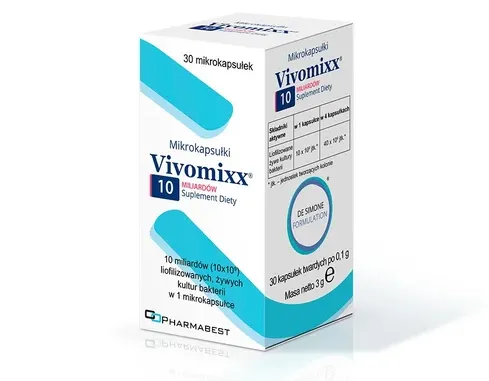
- Probiotic strains: Streptococcus thermophilus, Bifidobacterium breve, Bifidobacterium longum, Bifidobacterium infantis, Lactobacillus acidophilus, Lactobacillus plantarum, Lactobacillus paracasei, Lactobacillus delbrueckii subsp. bulgaricus .
- Additional active ingredients: none .
- Form: capsules .
- Dosage: 1–4 capsules daily .
- Sufficient for: 7–30 days .
Product description
A dietary supplement containing a complex of different strainsóof probioticsós. The diversified types of bacterial cultures will help to effectively rebuild the microbiota of the digestive system, improve intestinal function and support the body's natural immunity.
Probiotic supplement.
Pros and cons
A dietary supplement containing a complex of different strainsóof probioticsós. The diversified types of bacterial cultures will help to effectively rebuild the microbiota of the digestive system, improve intestinal function and support the body's natural immunity.
Probiotic supplement.
Additional information
A dietary supplement containing a complex of different strainsóof probioticsós. The diversified types of bacterial cultures will help to effectively rebuild the microbiota of the digestive system, improve intestinal function and support the body's natural immunity.
Probiotic supplement.
Sundose° Daily Lightness°
Product description
Sundose° Daily Lightness° is a formula thatós supports the stomach and liver, reduces the frequency of gasóing and bloating, and supports optimal digestion. The formula contains no unnecessary additivesós, and the composition of the active ingredients (e.g. curcumin with piperine) mutually enhances their absorption.
The dietary supplement from Sundose comes in two flavour versions: orange and green.
Pros and cons
Sundose° Daily Lightness° is a formula thatós supports the stomach and liver, reduces the frequency of gasóing and bloating, and supports optimal digestion. The formula contains no unnecessary additivesós, and the composition of the active ingredients (e.g. curcumin with piperine) mutually enhances their absorption.
The dietary supplement from Sundose comes in two flavour versions: orange and green.
Additional information
Sundose° Daily Lightness° is a formula thatós supports the stomach and liver, reduces the frequency of gasóing and bloating, and supports optimal digestion. The formula contains no unnecessary additivesós, and the composition of the active ingredients (e.g. curcumin with piperine) mutually enhances their absorption.
The dietary supplement from Sundose comes in two flavour versions: orange and green.
Sundose° Daily Lightness° is a formula thatós supports the stomach and liver, reduces the frequency of gasóing and bloating, and supports optimal digestion. The formula contains no unnecessary additivesós, and the composition of the active ingredients (e.g. curcumin with piperine) mutually enhances their absorption.
The dietary supplement from Sundose comes in two flavour versions: orange and green.
Asecurin IB
Product description
Asecurin IB is a synbiotic, i.e. a combination of a probiotic and a prebiotic. It contains bacteria and yeast to support the intestines and digestive system, as well as inulin, whichós food for these microorganisms. The addition of a prebiotic supports and accelerates the growth of beneficial bacterial flora in the intestines.
Pros and cons
Asecurin IB is a synbiotic, i.e. a combination of a probiotic and a prebiotic. It contains bacteria and yeast to support the intestines and digestive system, as well as inulin, whichós food for these microorganisms. The addition of a prebiotic supports and accelerates the growth of beneficial bacterial flora in the intestines.
Additional information
Asecurin IB is a synbiotic, i.e. a combination of a probiotic and a prebiotic. It contains bacteria and yeast to support the intestines and digestive system, as well as inulin, whichós food for these microorganisms. The addition of a prebiotic supports and accelerates the growth of beneficial bacterial flora in the intestines.
Biocodex Enterol
Product description
Enterol is an OTC medicine containing a strain of yeastów particularlyóhelpful in the treatment of diarrhoea caused by infections or so-called travel diarrhoea. It is also recommended as a protective treatment of the intestines during antibiotic intake.
.
Pros and cons
Enterol is an OTC medicine containing a strain of yeastów particularlyóhelpful in the treatment of diarrhoea caused by infections or so-called travel diarrhoea. It is also recommended as a protective treatment of the intestines during antibiotic intake.
.
Additional information
Enterol is an OTC medicine containing a strain of yeastów particularlyóhelpful in the treatment of diarrhoea caused by infections or so-called travel diarrhoea. It is also recommended as a protective treatment of the intestines during antibiotic intake.
.
Enterol is an OTC medicine containing a strain of yeastów particularlyóhelpful in the treatment of diarrhoea caused by infections or so-called travel diarrhoea. It is also recommended as a protective treatment of the intestines during antibiotic intake.
.
Product description
Using Panaseus Digestive Formula can help improve intestinal health by supporting the intestinal barrier, reducing inflammation, protecting against damage and restoring healthy intestinal microflora.
Experience a rós difference in gut function with plant extracts, amino acids and probiotic bacteria.
Pros and cons
Using Panaseus Digestive Formula can help improve intestinal health by supporting the intestinal barrier, reducing inflammation, protecting against damage and restoring healthy intestinal microflora.
Experience a rós difference in gut function with plant extracts, amino acids and probiotic bacteria.
Additional information
Using Panaseus Digestive Formula can help improve intestinal health by supporting the intestinal barrier, reducing inflammation, protecting against damage and restoring healthy intestinal microflora.
Experience a rós difference in gut function with plant extracts, amino acids and probiotic bacteria.
Best probiotic for babies:
.
The bacterial flora of infants is only just developing. Bifidobacteria and lactobacilli, such as Lactobacillus rhamnosus GG, are particularly important for it. With probiotics for infants, the form of administration is also important - formulations in drops or for drinking, such as Multilac Baby or Acidolac, work best.
Best probiotic and products for the gut:
.
For intestinal ailments such as irritable bowel syndrome (IBS), probiotic bacterial strains such as Lactobacillus rhamnosus or Lactobacillus plantarum show the best efficacy according to research. Appropriately selected probiotics can not only improve intestinal function, but also reduce inflammation.
Best probiotic while on antibiotics:
.
One of the most effective probiotic strains for antibiotic therapy is yeast Saccharomyces boulardii. They are excellent for treating and preventing diarrhoea caused by antibiotics. These microorganisms include, for example, the probiotics Biocodex Enterol and Asecurin IB.
S. boulardii are yeasts belonging to a completely different species group to bacteria, so antibiotics have no effect on them. You can safely take this strain together with an antibiotic..
 .
.
Katarzyna Grajpermagister of pharmacy
.Keep in mind that Saccharomyces boulardii are not recommended for pregnant women, due to the lack of sufficient studies confirming the safety of use, adds magister of pharmacy.
.
Best gynecological probiotic:
.
The best gynaecological probiotic should contain bacteria that naturally occur in the vagina, which is primarily lactic acid bacilli - Lactobacillus. The best studied are Lactobacillus rhamnosus GR-1 and Lactobacillus reuteh RC-14. Recommended preparations include LaciBios femina and InVag.
.
LaciBios femina
.
Rating: 5.0
Badge: Editor's choice
- Active ingredients: Lactobacillus rhamnosus GR-1, Lactobacillus reuteri RC-14 .
- Formula: oral capsules .
- Packaging: 20 capsules .
- Sufficient for: 20 days .
Product description:
Convenient to use, oral gynaecological probiotic containing two of the best studied strains of lactic acid bacteria. The micro-organisms contained in the LaciBios formulation show a broad spectrum of action on the vaginal environment, regulating its pH and helping to combat pathogens. The two bacterial species work perfectly together and complement each other.
Pluses and minuses:
Pluses:
- Well-labelled strains of probiotic bacteria.
- The use of proven probiotic bacteria.
- Use of proven and tested strains. .
- Product is recommended by the Polish Gynecological Society.
- Product is recommended by the Polish Gynecological Society.
- The product has been awarded the Customer Laurel 2018 and the Good Brand 2021 award. .
Minusals:
.- None: .
Additional information:
.
You can store this probiotic at room temperature for a fortnight.
IBSS biomed InVag
Rating: 4.9
- Active ingredients: Lactobacillus fermentum 57A, Lactobacillus plantarum 57B, Lactobacillus gasseri 57C .
- Form: vaginal capsules .
- Packaging: 7 capsules .
- Sufficient for: 7 days .
Product description:
This medicinal product contains lactic acid bacteria, which are key to maintaining a healthy vaginal pH. Thanks to them, InVag helps to restore the right acidity, which is essential for optimal intimate health.
The bacteria contained in InVag are the most important bacteria in the vagina.
The bacteria in the formulation have the ability to colonise the vaginal epithelium, which further strengthens your body's natural defence barrier.
Pluses and minuses:
Pluses:
- Well-labelled strains of probiotic bacteria.
- Preferentially labelled strains of probiotic bacteria.
Minusals:
.- None: .
Additional information:
.
Preparation should be stored in the refrigerator.
See also:
.
- Probiotic before or after an antibiotic?
- Gynecological starch
- Gynecological strobiotic
- Probiotic for irritable bowel
- Probiotic for pregnant women
How to choose the best probiotic - a buyer's guide
.
Before you spend money on a particular product, read what to look out for to ensure you get the best results from your treatment.
Choose the bacterial species
.
You know the saying that if something is for everything, it's for nothing? After all, you don't want to take a random mix of strains that won't hit your needs. Therefore, choose strains with a targeted effect on the problem that affects you.
The properties of different bacterial species vary between their strains. A good example is Lactobacillus rhamnosus -GG strains will be excellent for intestinal ailments, while GR-1 will help with intimate infectionsand.
This is why a different preparation will work better as a cover for an antibiotic and another to supplement a newborn's gut microflora. To choose the best probiotic for your needs, check the formulations and consult your pharmacist or doctor.
Check the label.
Check strain labels
.
Already know which bacteria will work best for your situation? Great. Then now see if the manufacturer has appropriately labelled them in their product. A high-quality probiotic should contain bacterial names consisting of three partsand:
- genus name, .
- species names, .
- the names of the specific strain, .
This should read as follows: Bifidobacterium (genus) Iactis (species) W52 (strain). If the manufacturer only writes Bifidobacterium Iactis it is as if they are selling you a "sheepdog". It would be good to know whether you are buying a German Shepherd or perhaps a Welsh Shepherd (i.e. the popular corgi).
In addition, a good probiotic should also contain the CFU (colony-forming unit) designation. This indicator tells you, how many bacteria a daily serving of the probiotic contains.
Think about survival
.
The final point to consider when choosing is the survival rate of the bacteria. The best manufacturers of probiotic preparations encapsulate them in special capsules with a coating that protects the microorganisms from bile and digestive juices. This allows more bacteria to survive the journey through the digestive system and reach the target -the intestines.
For liquid probiotics (most commonly used in young children), it is also possible to use appropriate formulations to improve the survival of bacteria in the digestive system.
Probiotics are worth taking with food, including dairy products. By lowering the acidity in the stomach in this way, we increase the chance of survival of the probiotic bacteria..
 .
.
Katarzyna Grajpermagister of pharmacy
..
Properties of probiotics
.
It turns out that the gut and its inhabitants are more important to health than one might think. Bacterial flora affect your entire body from digestive processes, to sexual health, to... the brain.
Probiotics can help to protect your gut.
Protection with antibiotics
.
Antibiotics can destroy not only pathogenic organisms, but also the beneficial bacteria that populate the gut. This depletion of the microbiota can lead to the development of other pathogens, such as Clostridium difficile, which can cause diarrhoea, heartburn and other digestive problemsand.
The use of probiotics during antibiotic therapy can reduce the risk of post-antibiotic diarrhoea, which is a common side effect of this therapy. Probiotic bacteria also help to strengthen the immune system, which is particularly important when fighting infectionand.
Gut support
.
Probiotic bacteria help digest food, absorb nutrients and fight pathogenic microbes. This helps your intestines to function better. Probiotics are also an important part of the intestinal barrier, which helps protect your body from harmful substancesand.
Probiotics may also support the treatment of diseases such as irritable bowel syndrome (IBS), diverticulosis and inflammatory bowel disease. Studies suggest that certain probiotic strains help inhibit inflammation in the body and the bothersome gastrointestinal symptoms that accompany these conditionsand.
Improving immunity
.
Probiotics play a key role in your immune system. They have the potential to stimulate the production of antibodies. This means they can help your body produce proteins that fight viruses or bacteria. Some studies show that probiotics increase levels of IgA antibodies, which are key to fighting infectionsand.
Additionally, probiotics can affect immune cells, such as lymphocytes, providing them with better conditions to fight pathogens .
Help for intimate infections
.
Probiotics play a key role in maintaining a healthy environment within the genitourinary tract in women. They work by colonising spaces that could be occupied by harmful bacteria or fungi, thus preventing infections. They also work by stimulating the immune response, which helps to fight pathogensand.
Probiotic bacteria present in the vagina take care of the correct pH of the vagina, which also has an impact on susceptibility to intimate infections. When the pH is sufficiently acidic, it is more difficult for pathogenic fungi and microbes to thrive thereand.
Effects on mental health
.
The effects of probiotics extend far beyond the digestive system. Research suggests that they may also benefit mental healthand.
The findings are based on the concept of the gut-brain axis, which talks about the two-way communication between your gut and your brain. Probiotic bacteria produce a variety of chemicals that communicate with the brain through the nervous, endocrine and immune systemsand.
For example, certain probiotic strains help to produce serotonin - a neurotransmitter that regulates mood, sleep and appetite. Low serotonin levels are often associated with depression. Additionally, probiotics can reduce inflammation, which is associated with many psychiatric disorders, including anxiety disordersand.
Probiotic contraindications
.
Probiotics are generally safe for most people. However, there are groups of people who should avoid them. This includes patients with severe immune disorders (congenital or acquired - e.g. related to HIV/AIDS) or with severely weakened immune systems (e.g. after chemotherapy or surgery)and.
For example, people who are being treated for cancer with chemotherapy or who have HIV, should not take probiotics as they can lead to a systemic bacterial infection. Similarly, if you have a central venous catheter, there is a risk of blood infectionand.
If you are pregnant or breastfeeding, consult your doctor before starting probiotics. Not all strains are tested for how they affect a developing baby or child.
If you have any doubts about taking probiotics, consult your doctor who is familiar with your condition.
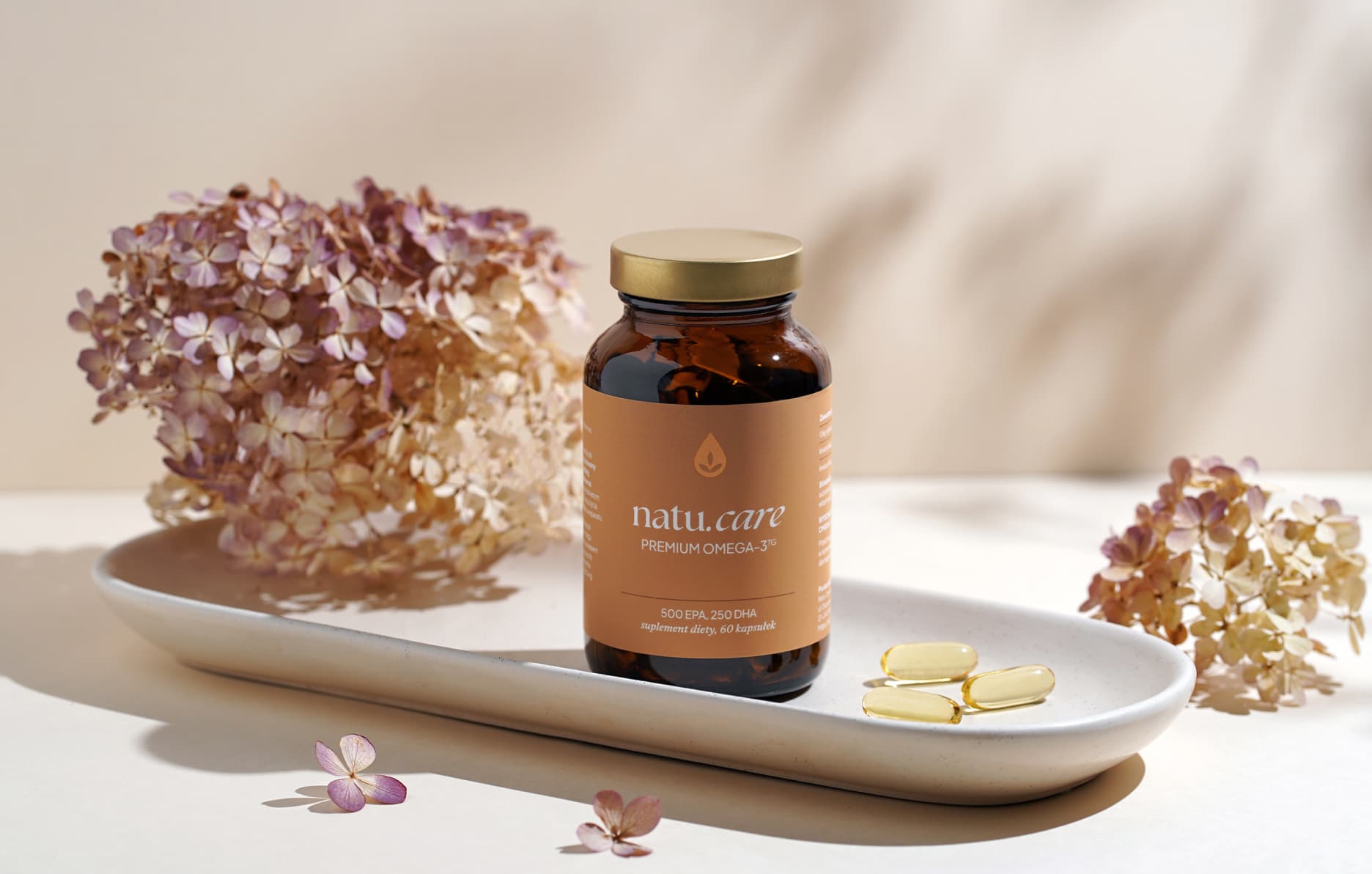
Sprawdź, za co pokochały go tysiące klientek Natu.Care Premium Omega-3ᵀᴳ -15% z kodem BLOG15
Natu.Care Omega-3ᵀᴳ Premium
Natu.Care Omega-3ᵀᴳ Premium dla zdrowia serca, mózgu i odporności. Najlepsza przyswajalność. Optymalna dawka 750 mg. Przebadana przez niezależne laboratorium.
Zobacz więcej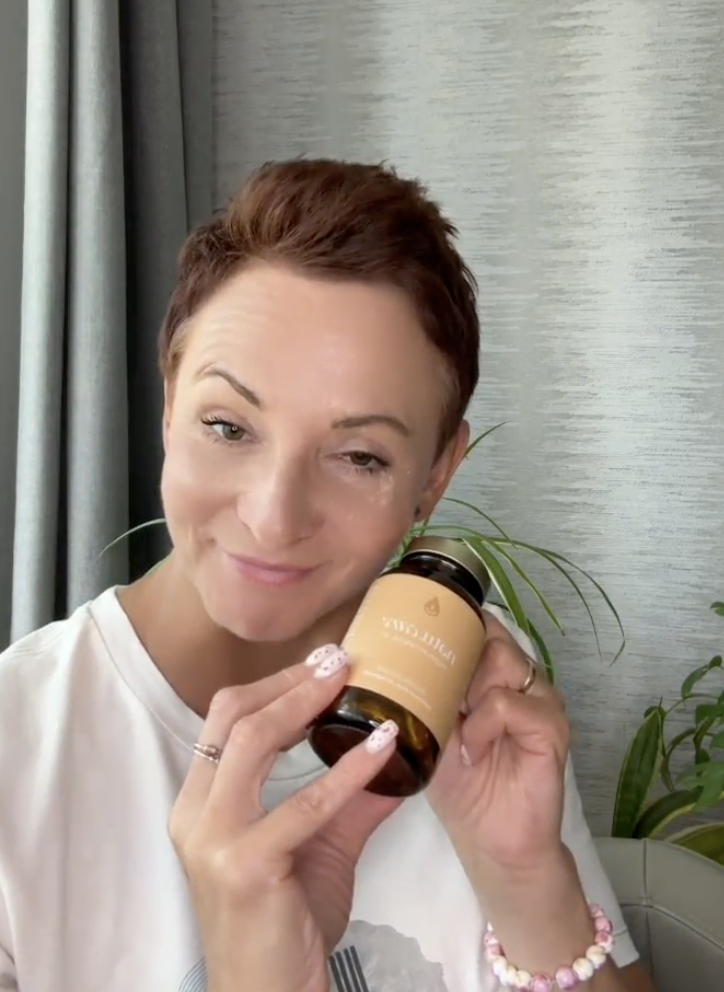
Produkt ma super skład, transparentną etykietę i co dla mnie jest ważne – małe kapsułki do połknięcia. Nie ma też nieprzyjemnego efektu odbijania rybą, który miałam spożywając inne produkty. Widzę znaczną poprawę odporności. Polecam!@Kasia P.
See also:
.
Summary
.
- When choosing a probiotic, pay particular attention to the type and strain of probiotic bacteria. It should have a scientifically proven effect on the circumstances for which you want to take it.
- It is important that the probiotic has a proven effect on the circumstances for which you want to take it.
- It is important that probiotic bacteria are labelled with a three-part name along with an indication of CFUs. .
- Probiotics can support your gut and digestive system, and also have a protective effect with antibiotic therapy. However, their effects are much broader: they affect immunity and even mental health.
- Probiotics are safe, but people with severe immune disorders should not use them. .
FAQ
.Which probiotic has the most bacterial strains?
.One of the probiotics with the highest number of strains is Bio-Kult Advanced Multi-Strain Formula, which contains as many as 14. Both Bifidobacterium and Lactobacillus are included. The variety of strains is important, as each has different functions and areas of action. The manufacturer recommends this product for antibiotic therapy and the treatment of diarrhoea of various origins.
This does not mean, however, that the more bacterial species in the probiotic, the better its action will be. In most cases, preparations containing a few or even one or two strains with specifically targeted properties will work better.
What is the best probiotic for antibiotics?
.Choose a probiotic containing strains of Lactobacillus and Bifidobacterium bacteria, as well as yeast Saccharomyces boulardii. You will find this composition in Asecurin IB, for example. Take it at least 2 hours apart from the antibiotic so as not to nullify its effect.
What is the best natural probiotic?
.The best natural probiotic is natural yoghurt. Choose yoghurt without additives (e.g. flavours, colours, sugar) and with live bacteria cultures, which should be indicated on the label. Probiotic bacteria, such as Lactobacillus and Bifidobacterium in yoghurt, support gut health.
Other fermented foods, such as kefir, sauerkraut and kimchi, are also rich sources of probiotics. Be sure to eat foods rich in probiotics on a daily basis to maintain a balanced gut microflora. A healthy gut flora improves digestion, strengthens the immune system and overall wellbeing.
Which yoghurt is probiotic?
.Choose a probiotic yoghurt, i.e. one that contains live cultures of bacteria, such as Lactobacillus acidophilus, L. casei, L. rhamnosus, Bifidobacterium lactis and B. bifidum. Examples of probiotic yoghurt brands include Activia, Yakult, or Krasnystaw. When looking for yoghurt, check the label to make sure it shows live and active bacteria cultures.
Avoid yogurts with added sugar as it can inhibit the growth of probiotics. Probiotic yogurts can promote gut health, improve the immune system and help maintain a healthy gut flora.
Pharmacist Katarzyna Grajper explains: Yoghurt alone with antibiotic therapy is not enough. The results of studies usually do not support their effectiveness in reducing the occurrence of diarrhoea. The exception to this is the strain L. casei DN-114 001.
Is it possible to cure ringworm with a probiotic?
.Probiotics can help treat ringworm, but should not be used as the only treatment. Probiotic bacteria help to rebuild healthy bacterial flora, which can inhibit fungal growth. Choose those containing strains such as Lactobacillus rhamnosus, Lactobacillus reuteri or Saccharomyces boulardii, which are effective against fungus.
However, don't forget the antifungal medicines prescribed by your doctor that directly combat the fungi. A combination of both therapies has good results. In addition, pay attention to diet - avoid sugars and processed foods, which can encourage fungal growth. Probiotics and antifungal medications are tools that, together with a proper diet, can effectively combat ringworm.
What are the symptoms of a lack of bacterial flora?
.Lack of bacterial flora can manifest as a variety of symptoms. Look out for the following:
- Digestive disorders - can manifest as diarrhoea, constipation, bloating, nausea. This is due to the fact that intestinal bacteria play a key role in the digestive process.
- Digestion.
- Weakening of the immune system - frequent infections, colds. Bacterial flora is an integral part of the immune system.
- Skin changes - dryness, irritation, acne or eczema can also be caused by deficiencies in the bacterial microflora. .
Do probiotics harm the liver?
.No, probiotics generally do not harm the liver. Take them as recommended by the manufacturer or your doctor. For people with serious health conditions such as liver failure, probiotics can theoretically lead to infection, but this is rare. If you have liver disease, consult your doctor before taking probiotics.
Taking probiotics may even be beneficial for people with cirrhosis, as it has the potential to reduce the risk of hepatic encephalopathy. This is because probiotics can reduce levels of ammonia in the body, which can be harmful to the brain when the liver is unable to remove it.
.
Sources
.See all
.Amara, A. A., & Shibl, A. (2015). Role of Probiotics in health improvement, infection control and disease treatment and management. Saudi Pharmaceutical Journal, 23(2), 107-114. https://doi.org/10.1016/j.jsps.2013.07.001
Cheng, J., & Ouwehand, A. C. (2020). Gastroesophageal Reflux Disease and Probiotics: A Systematic Review. Nutrients, 12(1), Article 1. https://doi.org/10.3390/nu12010132
Das, T. K., Pradhan, S., Chakrabarti, S., Mondal, K. C., & Ghosh, K. (2022). Current status of probiotic and related health benefits. Applied Food Research, 2(2), 100185. https://doi.org/10.1016/j.afres.2022.100185
Fatahi, S., Hosseini, A., Sohouli, M. H., Sayyari, A., Khatami, K., Farsani, Z. F., Amiri, H., Dara, N., de Souza, I. G. O., & Santos, H. O. (2022). Effects of probiotic supplementation on abdominal pain severity in pediatric patients with irritable bowel syndrome: A systematic review and meta-analysis of randomized clinical trials. World Journal of Pediatrics, 18(5), 320-332. https://doi.org/10.1007/s12519-022-00516-6
Kechagia, M., Basoulis, D., Konstantopoulou, S., Dimitriadi, D., Gyftopoulou, K., Skarmoutsou, N., & Fakiri, E. M. (2013). Health Benefits of Probiotics: A Review. International Scholarly Research Notices, 2013, e481651. https://doi.org/10.5402/2013/481651
Kober, M.-M., & Bowe, W. P. (2015). The effect of probiotics on immune regulation, acne, and photoaging. International Journal of Women's Dermatology, 1(2), 85-89. https://doi.org/10.1016/j.ijwd.2015.02.001
Liu, W., Xie, Y., Li, Y., Zheng, L., Xiao, Q., Zhou, X., Li, Q., Yang, N., Zuo, K., Xu, T., Lu, N.-H., & Zhang, H. (2022). Protocol of a randomized, double-blind, placebo-controlled study of the effect of probiotics on the gut microbiome of patients with gastro-oesophageal reflux disease treated with rabeprazole. BMC Gastroenterology, 22(1), 255. https://doi.org/10.1186/s12876-022-02320-y
Markowska-Jędra, A. (2020, December 8). Gut-brain axis. NeuroExpert. https://neuroexpert.org/wiki/os-jelita-mozg/
Martín-Peláez, S., Cano-Ibáñez, N., Pinto-Gallardo, M., & Amezcua-Prieto, C. (2022). The Impact of Probiotics, Prebiotics, and Synbiotics during Pregnancy or Lactation on the Intestinal Microbiota of Children Born by Cesarean Section: A Systematic Review. Nutrients, 14(2), Article 2. https://doi.org/10.3390/nu14020341
Nikolova, V. L., Cleare, A. J., Young, A. H., & Stone, J. M. (2023). Acceptability, Tolerability, and Estimates of Putative Treatment Effects of Probiotics as Adjunctive Treatment in Patients With Depression: A Randomized Clinical Trial. JAMA Psychiatry, 80(8), 842-847. https://doi.org/10.1001/jamapsychiatry.2023.1817
Office of Dietary Supplements-Probiotics. (n.d.). Retrieved 11 August 2023, from https://ods.od.nih.gov/factsheets/Probiotics-HealthProfessional/
Reid, G., Gadir, A. A., & Dhir, R. (2019). Probiotics: Reiterating What They Are and What They Are Not. Frontiers in Microbiology, 10. https://www.frontiersin.org/articles/10.3389/fmicb.2019.00424
Sabaté, J.-M., & Iglicki, F. (2022). Effect of Bifidobacterium longum 35624 on disease severity and quality of life in patients with irritable bowel syndrome. World Journal of Gastroenterology, 28(7), 732-744. https://doi.org/10.3748/wjg.v28.i7.732
Sun, H., Li, X., Chen, W., Jia, F., Su, J., Zhang, B., Wu, X., & Wu, P. (2021). Effect of probiotics and dietary fiber combined with pinaverium bromide on intestinal flora in patients with irritable bowel syndrome. American Journal of Translational Research, 13(12), 14039-14045.
Tavakoly, R., Hadi, A., Rafie, N., Talaei, B., Marx, W., & Arab, A. (2021). Effect of Probiotic Consumption on Immune Response in Athletes: A Meta-analysis. International Journal of Sports Medicine, 42(09), 769-781. https://doi.org/10.1055/a-1463-3303
Wallace, C. J. K., & Milev, R. (2017). The effects of probiotics on depressive symptoms in humans: A systematic review. Annals of General Psychiatry, 16(1), 14. https://doi.org/10.1186/s12991-017-0138-2
Wang, Y., Jiang, Y., Deng, Y., Yi, C., Wang, Y., Ding, M., Liu, J., Jin, X., Shen, L., He, Y., Wu, X., Chen, X., Sun, C., Zheng, M., Zhang, R., Ye, H., An, H., & Wong, A. (2020). Probiotic Supplements: Hope or Hype? Frontiers in Microbiology, 11. https://www.frontiersin.org/articles/10.3389/fmicb.2020.00160
.Yadav, M. K., Kumari, I., Singh, B., Sharma, K. K., & Tiwari, S. K. (2022). Probiotics, prebiotics and synbiotics: Safe options for next-generation therapeutics. Applied Microbiology and Biotechnology, 106(2), 505-521. https://doi.org/10.1007/s00253-021-11646-8
Zhang, C., Li, L., Jin, B., Xu, X., Zuo, X., Li, Y., & Li, Z. (2021). The Effects of Delivery Mode on the Gut Microbiota and Health: State of Art. Frontiers in Microbiology, 12. https://www.frontiersin.org/articles/10.3389/fmicb.2021.724449
Zhang, Z., Lv, J., Pan, L., & Zhang, Y. (2018). Roles and applications of probiotic Lactobacillus strains. Applied Microbiology and Biotechnology, 102(19), 8135-8143. https://doi.org/10.1007/s00253-018-9217-9
.
Editorials
Meet the team

master of pharmacy
Katarzyna Grajper is a graduate in pharmacy from the Medical University of Gdansk. She works as a Master of Pharmacy in a pharmacy on a daily basis. She tries to constantly expand her knowledge with current guidelines so that the patient can receive competent advice in accordance with EBM (Evidence Based Medicine).

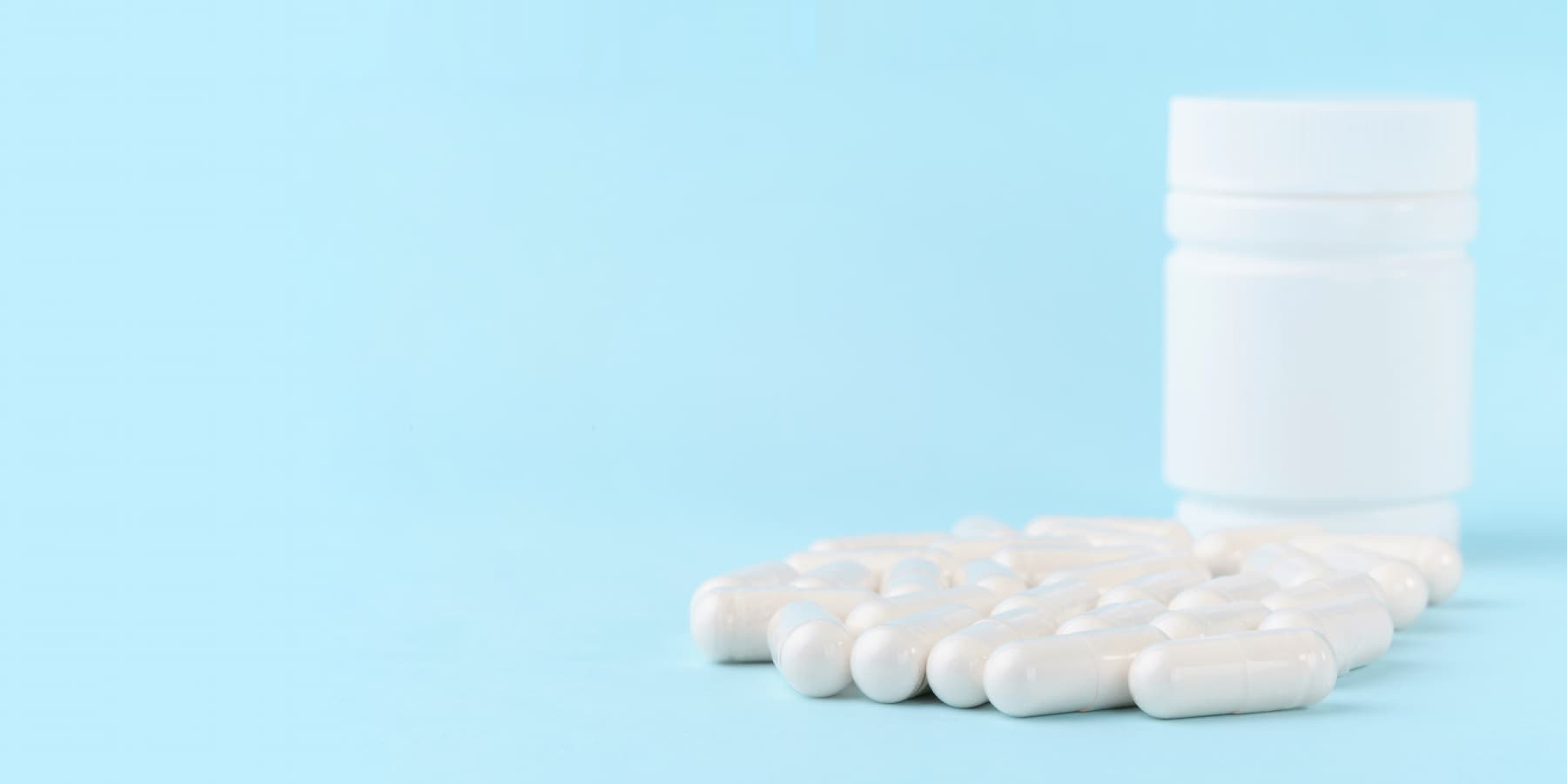
Chondroitin helps the joints and other elements of the body.

Glutathione is one of the most potent antioxidants for supporting the body's health. Find out how it works and where to get it from.

See why hip joints hurt and how to treat their ailments.
